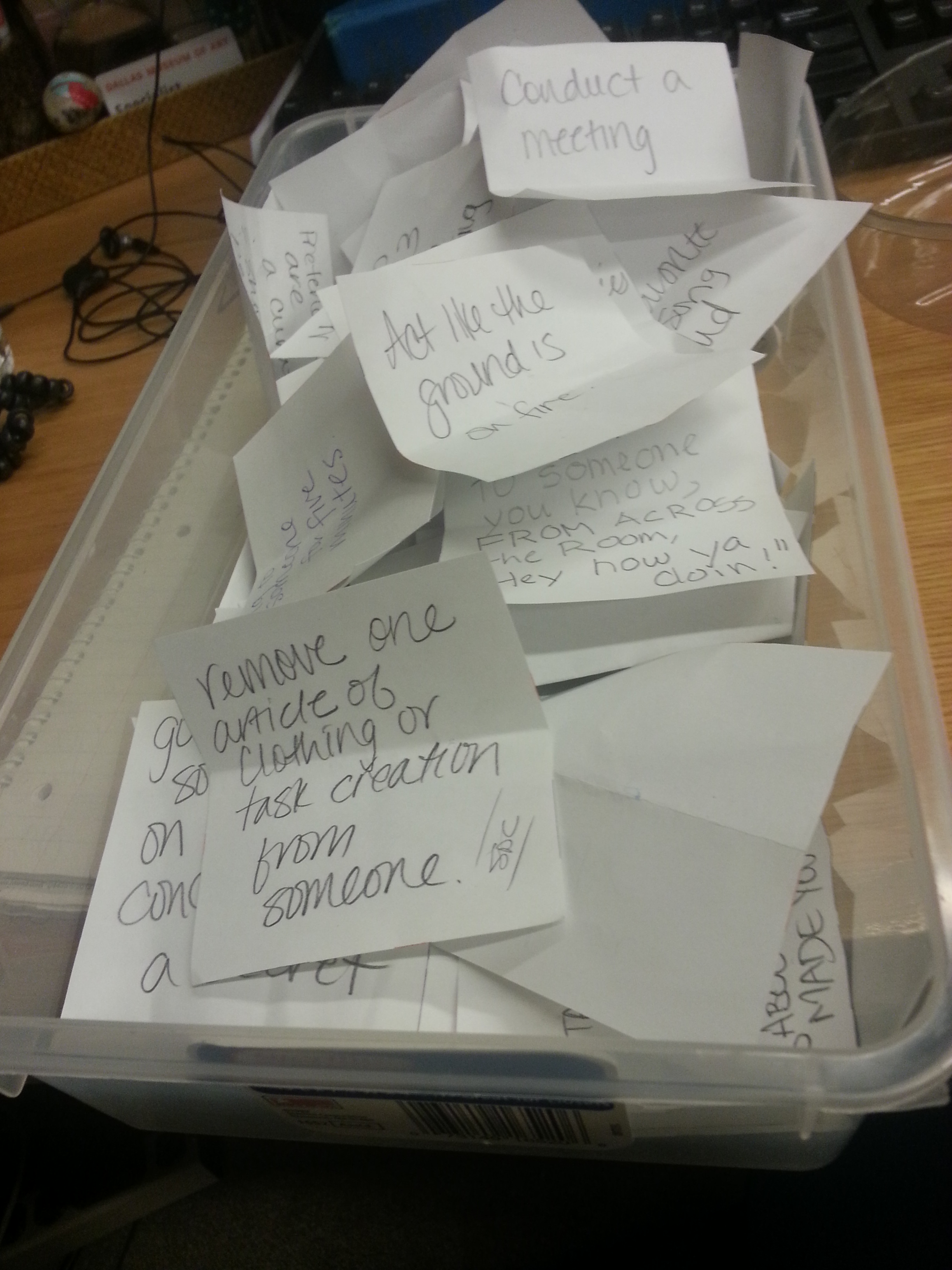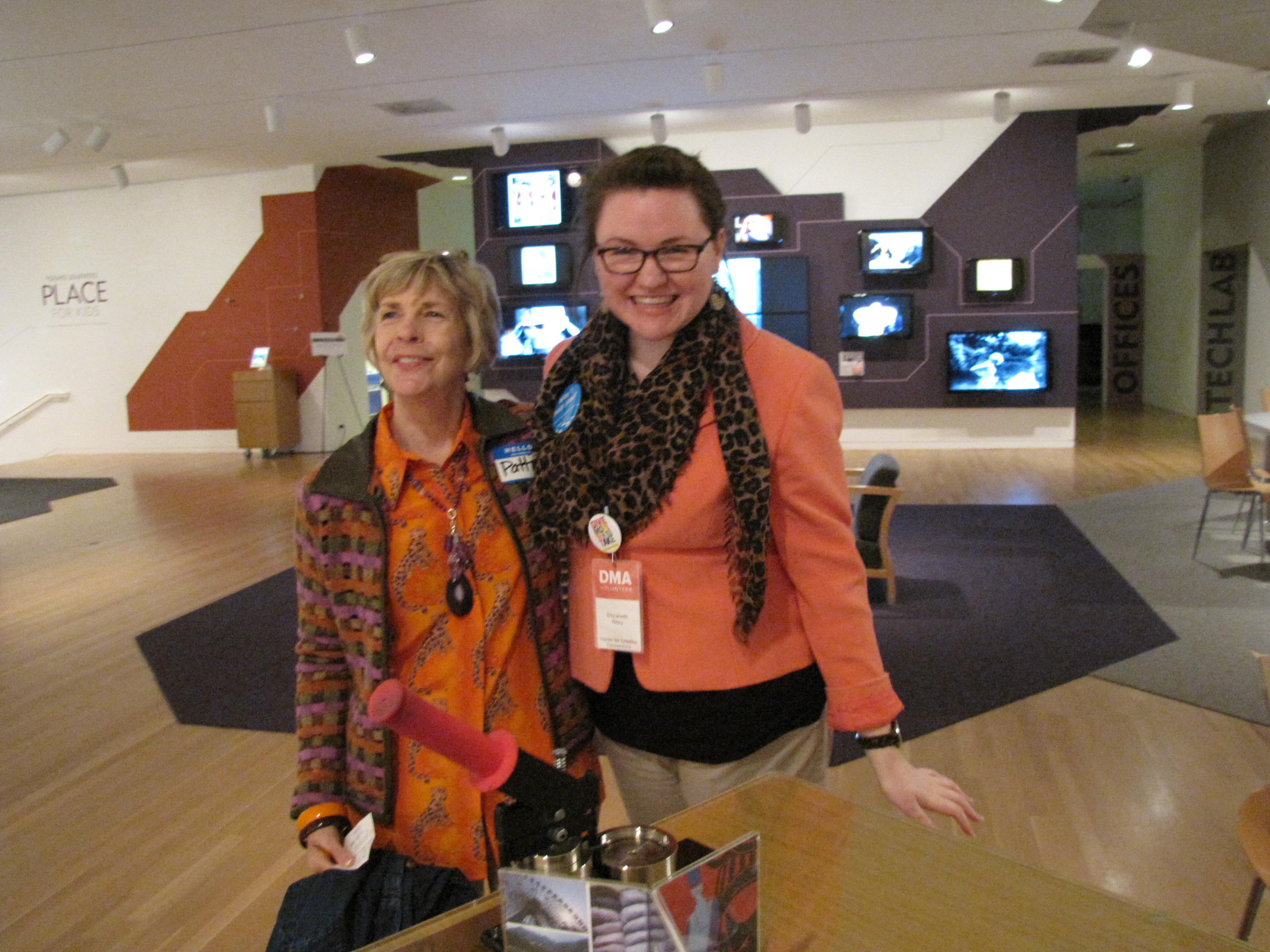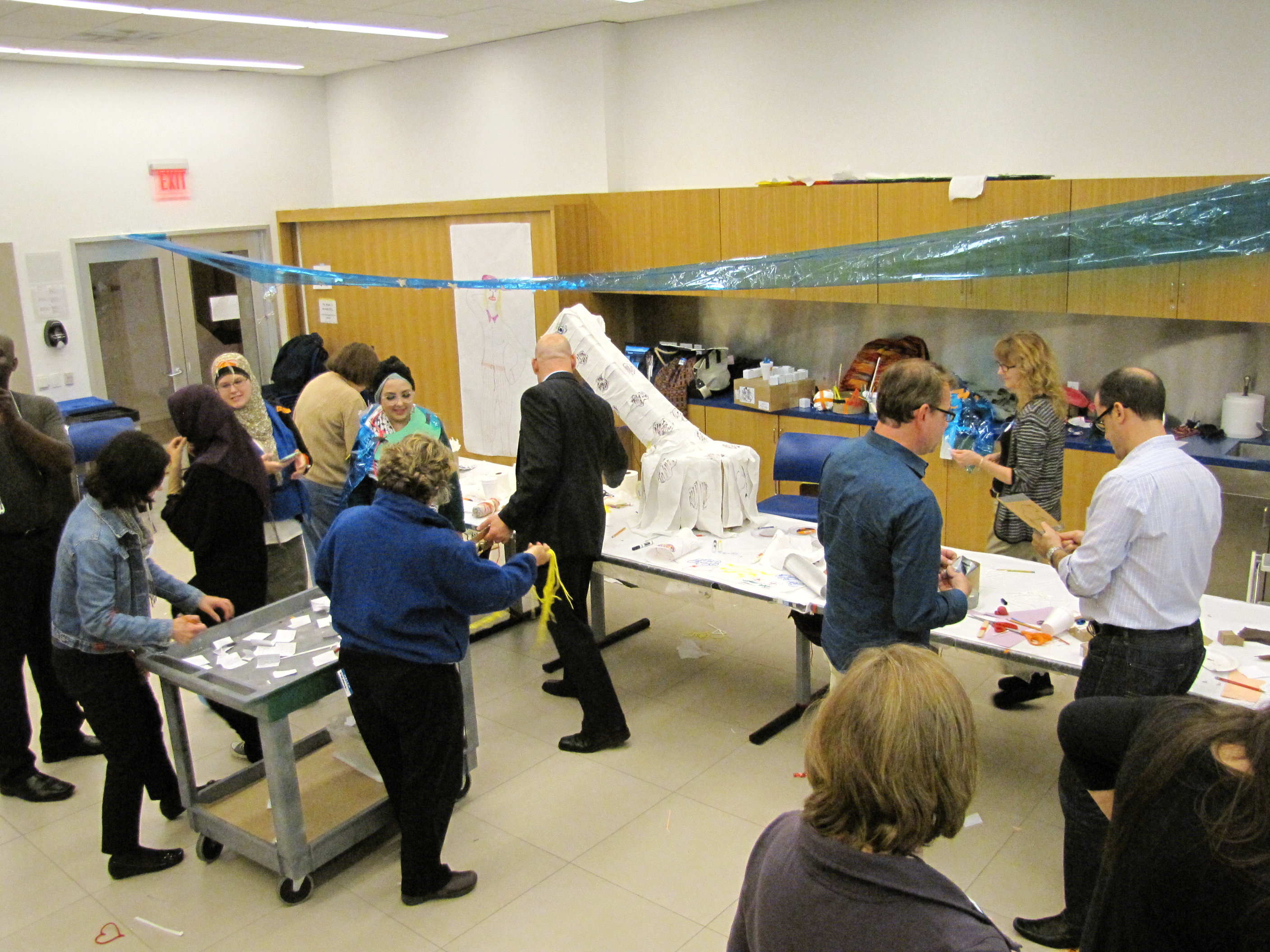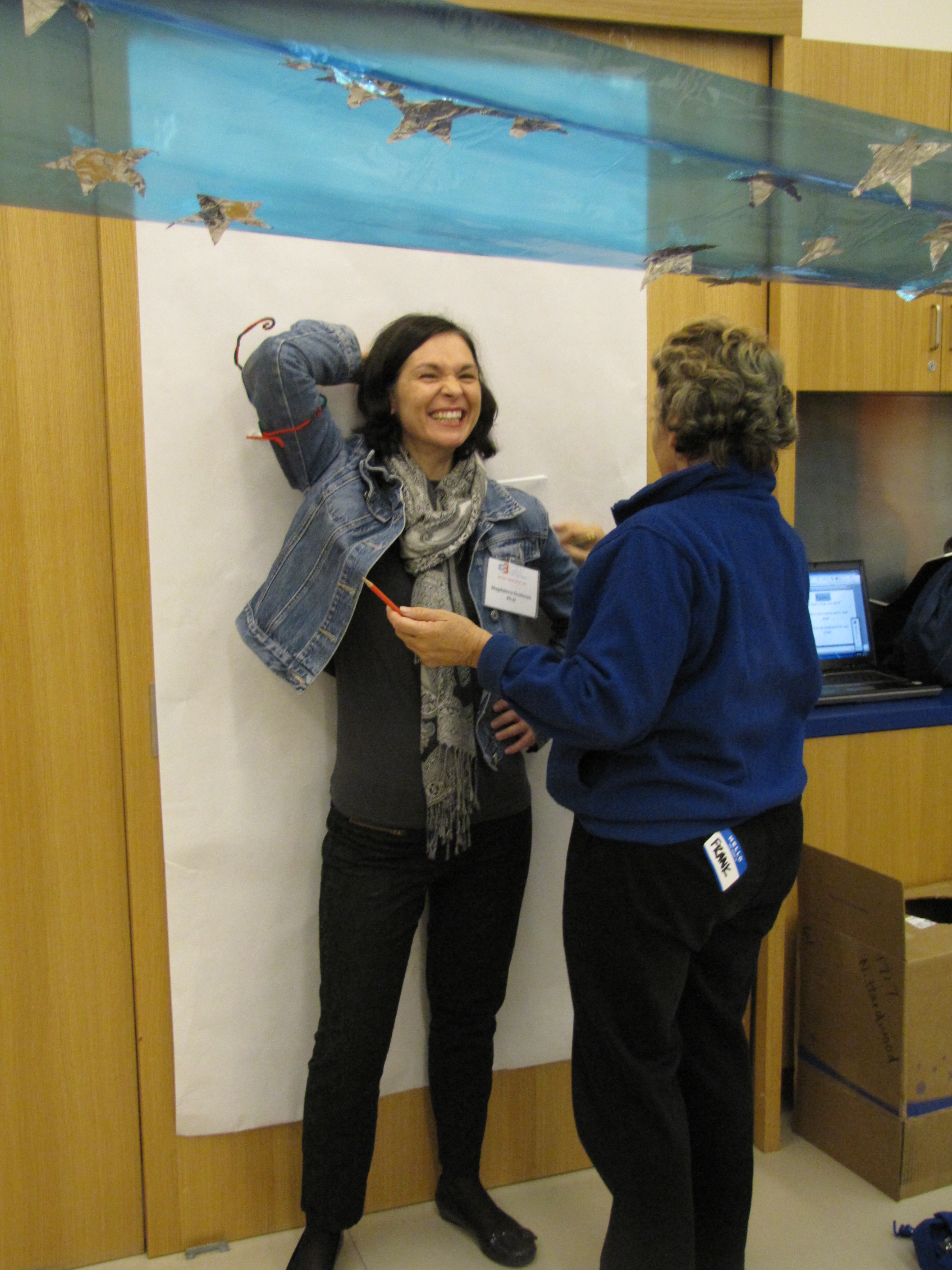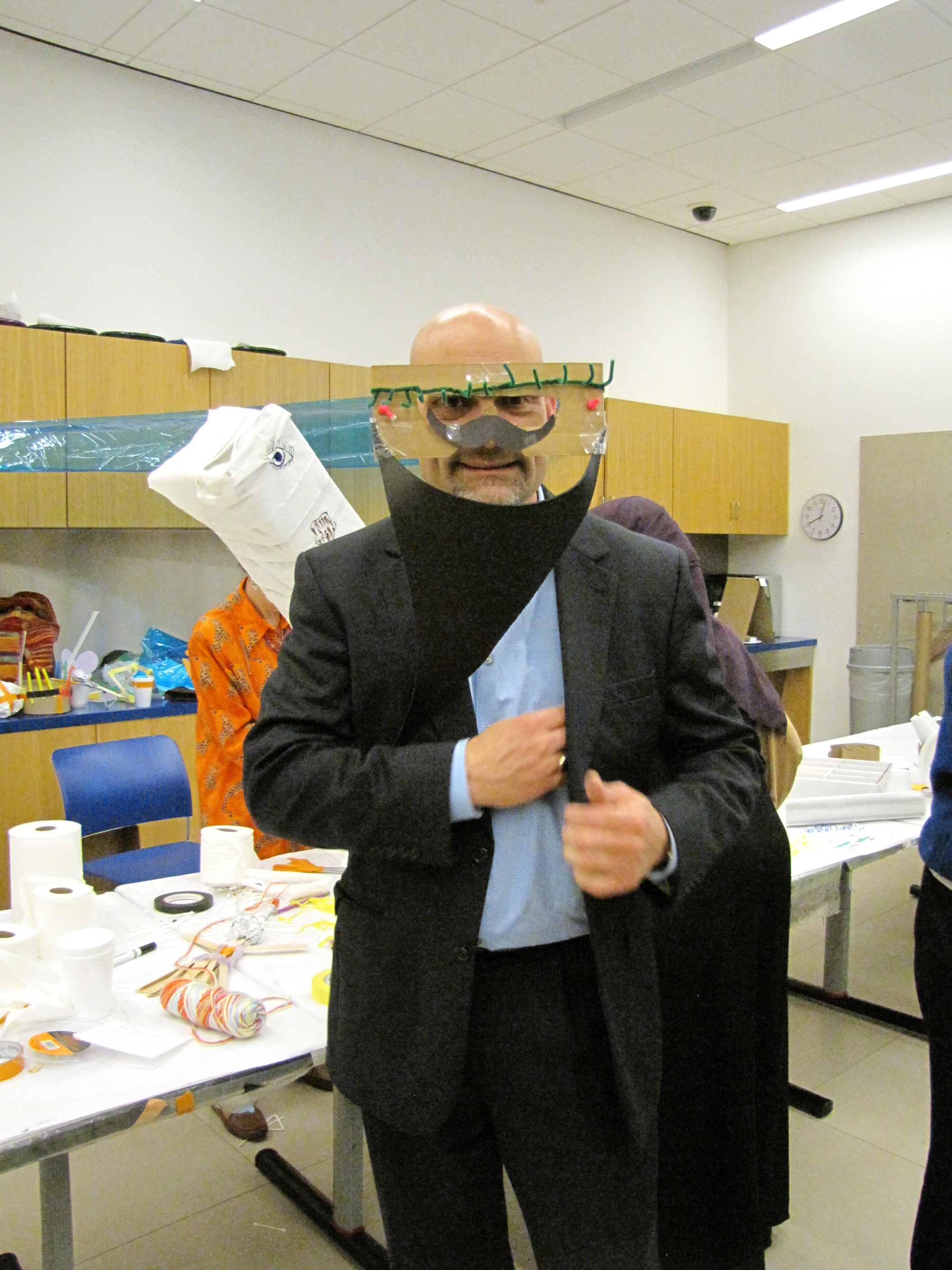The C3 adults are at it again and this time they didn’t spare one ounce of fun! C3 offers a variety of programming for adults on Thursdays, when our visitors have the opportunity to have hands-on experiences with art and artists, be social, and experiment with materials. Think Creatively, one of our popular programs, allows visitors to dig deeper into certain aspects of creative thinking.
Think Creatively on November 7 was designed around the theme of play and how it helps adults enhance their thinking and learning. Dr. Magdalena Grohman and I decided to ask our participants to step out of their comfort zone and participate in a TASK party. TASK parties, originally designed by artist Oliver Herring, are improvised events with loose structure and minimal rules.
[vimeo http://vimeo.com/79215067]
We set up the C3 Studio in a way that would promote playful experimentation, fun, and artful self expression. Varieties of materials were placed on worktables around the studio: paper, boxes, tape, sticks, and even toilet paper! The rules were simple: take a TASK from the TASK pool in the center of the room and do what it says. Then when a TASK is completed, write a new TASK and put it into the pool and get another one. Simple as that!
There were a set amount of tasks already created with an intent to promote play and participation from the same perspective as Mildred Parten. Parten studied social play in children and suggested that there are six types of play:
- Unoccupied play: the child is relatively stationary and appears to be performing random movements with no apparent purpose. A relatively infrequent style of play.
- Solitary play: the child is completely engrossed in playing and does not seem to notice other children. Most often seen in children between 2 and 3 years-old.
- Onlooker play: the child takes an interest in other children’s play but does not join in. May ask questions or just talk to other children, but the main activity is simply to watch.
- Parallel play: the child mimics other children’s play but doesn’t actively engage with them. For example, they may use the same toy.
- Associative play: children are now more interested in each other rather than the toys they are using. This is the first category that involves strong social interaction between children while they play.
- Cooperative play: some organization enters children’s play, for example the playing has some goal and children often adopt roles and act as a group.
We knew that anything could happen—and it sure did!
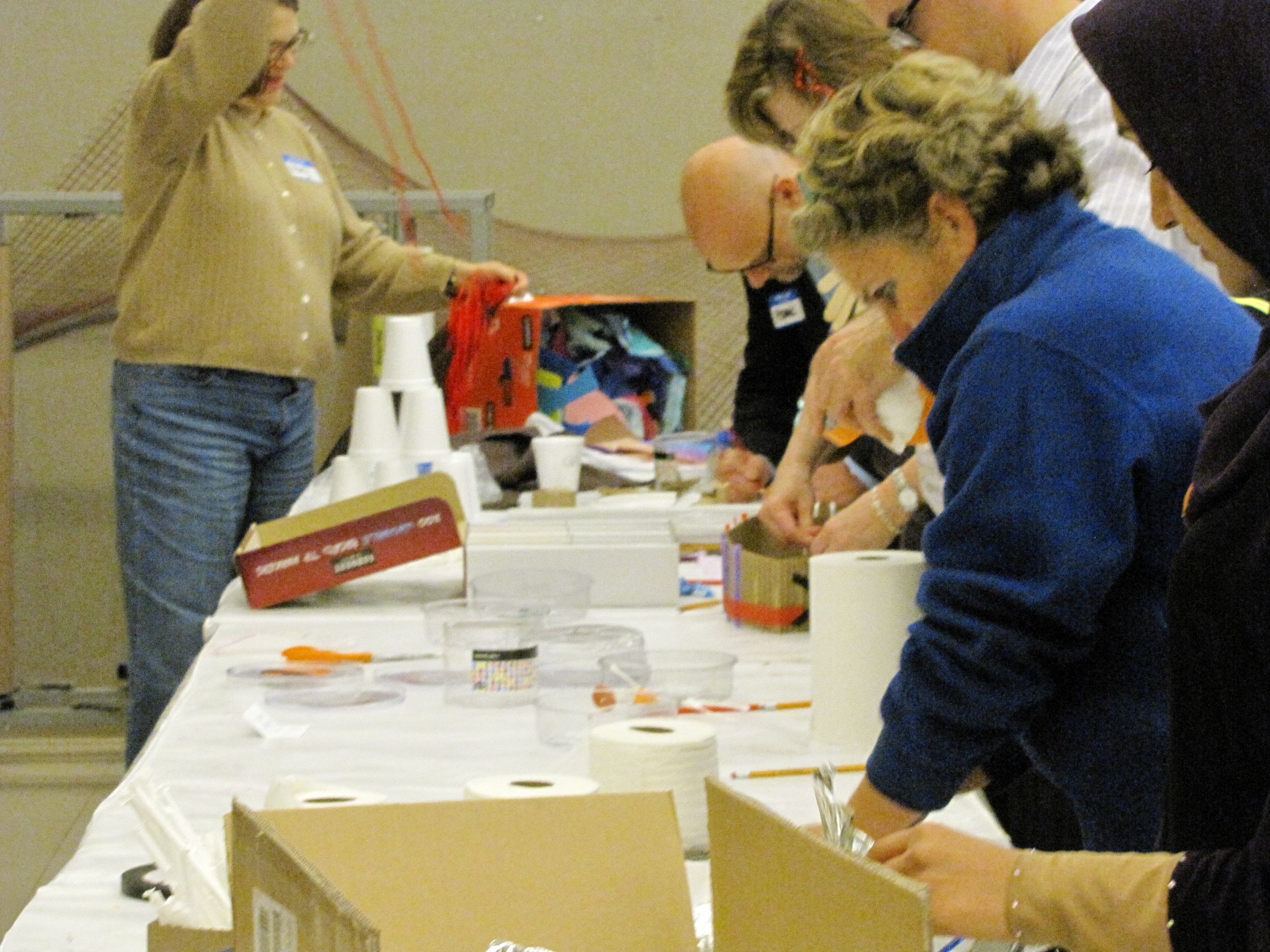
Working away!
Don’t miss our next Think Creatively workshop on December 5, 2013. If you are reading this post and are interested in attending for 50% off–click here and enter the special code: CANVAS.
Amanda Batson
C3 Program Coordinator
